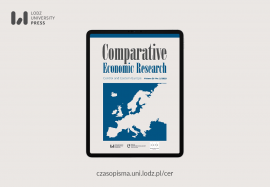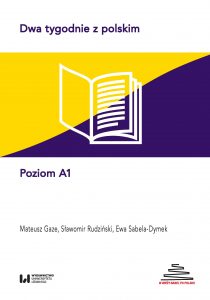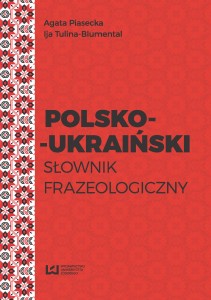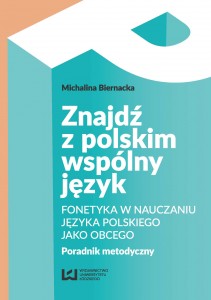Comparative Economic Research. Central and Eastern Europe | Tom 26 Nr 2
Opublikowano: 28 czerwca 2023

Comparative Economic Research. Central & Eastern Europe has been published since 1998 by the Institute of Economics at the Faculty of Economics and Sociology of the University of Lodz, one of the leading universities in Poland.
The aim of the periodical is to publish the original results of empirical comparative research in the field of economic and social sciences, mainly concerning the countries of the European Union and countries from Central and Eastern Europe.
As part of economic and social research, the following is particularly important:
- Macroeconomic issues, with particular emphasis on:
- economic growth and sustainable development,
- globalization of the economy,
- labor market,
- financial market,
- technology transfer,
- development economics,
- issues of European economic integration, with particular emphasis on the functioning of the European Single Market and the transformation of both economic and social policies into the following directions of:
- counteracting the negative effects of climate change,
- circular and digital economy,
- in-depth analyzes of the consequences of the COVID-19 pandemic for EU Member States in the context of new challenges related to the achievement of the UN
- Sustainable Development Goals by 2030,
- strengthening the competitiveness of the European economy,
- comparative analyses of the position of the main “players” (including BRICs) in the global trade, services, capital and labor markets.
- Microeconomic issues related to the role of small and medium-sized enterprises in the context of their internationalization and the ability to create innovation.
Articles:
Sustainability Reporting Trends: A Systematic Literature Network Analysis
Vasyl Hyk, Oleh Vysochan, Olha Vysochan
Compiling and submitting sustainable development reports is a key area for reforming corporate reporting in light of the implementation of the Sustainable Development Goals. In recent years, the share of companies that report sustainable development and corporate social responsibility has grown significantly. Thus, the study of the definition of the conceptual apparatus is important. The article aims to study the quantitative and qualitative structure of the documentary flow of scientific periodicals, the main areas of research, and development trends and. It also presents the results of a systematic review of publications on “sustainability reporting”.
The study used bibliometric analysis of scientific periodicals from the Scopus scientometric database between 2011–2021. The scientific papers selected by the keyword “sustainability reporting” were exported for processing in the VOSviewer and R (bibliometrix package) computer programs. Based on the results of quantitative analysis, 625 publications were accepted, most of which were scientific articles. The main areas of research on sustainability reporting in accounting are sustainable development, sustainability, decision‑making, sustainability reporting, and accountability.
The study also made it possible to identify the authors and research schools that have made the most significant contribution to this topic, and to establish geographical clusters in the context of countries around the world that work closely with each other and the highest‑rated journals.
The originality of this study is that it helps to create a conceptual framework. It should guide the definition of future research, and it is designed to provide qualitative new insight into the role of sustainable development reporting. The article provides an opportunity to fill the gaps in quality research on sustainable development reporting. The main conclusions of this article will help researchers to expand their knowledge in this area through retrospective analysis of the research results.
The Motives for Issuing Exchangeable Bonds in the Privatization of State‑Owned Enterprises
Damian Kaźmierczak
Using a unique sample of exchangeable bond issues carried out in seven countries since the 2000s, this paper investigates the role of hybrid debt in the privatization of state‑owned enterprises (SOEs) via government‑controlled investment vehicles. This research shows that so far, sixteen series of exchangeable bonds amounting to approx. USD 25 billion were issued to privatize ten SOEs in the telecommunication, energy, basic materials, industrials, healthcare, and utilities sectors in Europe and Asia. Moreover, in some cases, the privatization of SOEs by means of exchangeables can prove to be a more favorable alternative to traditional methods of selling shares directly on the capital market, for example, via IPOs or SPOs (during periods of deep undervaluation of privatized companies or of high stock market volatility). First, shares can be sold at a later date and at a higher price. Second, the impact on the stock market price of an SOE may be less disruptive to shareholders. Third, the entire privatization process tends to be more flexible for issuers in that they can perceive exchangeables as a source of relatively cheap, long‑term external capital while keeping control over the privatized company until the potential conversion of debt by bondholders.
Energy Subsidies and their Implications for CO2 Emissions in the Visegrad Group Countries
Edward Molendowski, Agnieszka Pach‑Gurgul, Marta Ulbrych
The aim of the article is to present a review of the literature on energy subsidies and the scale and structure of subsidies for energy production in the Visegrad Group countries. It also presents the most important results of an investigation into the relationship and impact of fossil fuel subsidies on CO2 emissions based on a linear regression model. Due to the availability of comparable statistical data, the survey was limited to the period 2015–2020. The analysis does not provide a clear confirmation of the negative impact of the amount of subsidies (from the current or previous year) on the level of CO2 emissions.
Innovative Clusters of Global Trade Leadership
Liudmyla Tsymbal, Nataliya Moskalyuk, Svitlana Gromenkova, Vitalii Chaban
The formation of a new global system and systemic global interdependence has generated new competitiveness factors for market participants, determining their appropriate strategic behavior to ensure a highly competitive position and leadership. Therefore, the purpose of the study is to identify the countries of intellectual leaders in the global market and the factors that influence the positions that countries achieve in terms of leadership. The following research methods were used: multifactor regression models, cluster analysis, and comparative analysis. Based on the authors’ methodology for assessing countries’ intellectual leadership, the clustering of countries in the global economy is determined. The evaluation algorithm was based on three levels: 1) resources, 2) the intermediate results of intellectual activity, and 3) the final results of overall progress.
Using a multifactor regression model and cluster analysis, four clusters of countries were identified according to key indicators of intellectual leadership. For each cluster, the specialization of the two countries in terms of merchandise exports was analyzed: cluster 1 – the United States and Germany; cluster 2 – Israel and Italy; cluster 3 – Brazil and Ukraine; cluster 4 – China and South Korea. Each country is assigned an index of economic complexity, and the change in position of each country within a cluster over ten years is noted.
An important goal is to understand the determinants of the leadership of countries in each geographic region.
The analysis is based on the cluster analysis carried out in previous publications. The clustering of countries was carried out based on the dynamics of macroeconomic indicators over the past 15 years.
Global and European Foreign Trade during the COVID–19 Pandemic
Zofia Wysokińska
The article aims to answer the following questions: 1) How has the European Union’s international trade developed in terms of goods and geography in the last two years, and to what extent has it been resilient to the effects of the COVID–19 pandemic? 2) To what extent has the ambitious path to the development of the digital economy, including the particularly dynamic development of e‑commerce in recent years, contributed to reducing the negative effects of the COVID–19 pandemic?
The results of the research show that the global economy experienced a huge decline in trade in goods and services during the COVID–19 pandemic: World trade in goods fell by 7.4% in 2020, which means that global exports amounted to USD 17.6 trillion, i.e., USD 1.4 trillion less than in the previous year. It was the largest annual decline since the 2009 recession, when trade fell by 22%. However, a much stronger decline was recorded in world trade in services, which in 2020 shrank by 20% compared to 2019. During the COVID–19 pandemic, the dynamic development of global e‑commerce was noted. According to the data presented in the UNCTAD report of May 3, 2021, global e‑commerce increased to USD 26.7 billion. Business‑to‑business (B2B) sales dominate in e‑commerce. E‑commerce accounts for 30% of the world’s gross domestic product (GDP) and covers both business‑to‑business (B2B) and business‑to‑consumer (B2C) sales.
The Convergence of Factors That Affect the Dairy Product Market: A Comparative Analysis of European Union Countries
Jurij Klapkiv, Petro Putsenteilo, Vitalii Karpenko
The European Union is a large producer of milk and dairy products. It is also a significant market for the consumption of dairy products, which is characterised by effective demand, and it significantly influences the markets of other food products. The main milk producers in the EU are Germany, France, Poland, the Netherlands, Italy and Spain. Intensive migration has contributed to additional demand for food products, in particular, dairy products. This provided the basis for the construction and calculation of a dynamic model of dairy production, the export of dairy products, and the coexistence with the existing population as the main consumers in the EU–27 countries and Great Britain between 2004 and 2020.
An additional research value is that based on the presentation of the analysis and modeling, the relationship between the growth in the demand for dairy products and the growth in the population is established. The reason for the large population in the countries of Central and Eastern Europe is intensive migration flows, which increase the demand for dairy products. The increase in volumes reduces the cost price, which contributes to the export of dairy products, and also contributes to the increase in the volume of production of dairy products. The resulting models made it possible to analyse the influence of population growth on the increase in production volume. At the same time, the dependence and influence of the export of dairy products on the increase in the volume of production of dairy products in the EU–27 and Great Britain countries is investigated.
The results of the mathematical modelling indicate unique opportunities to develop the dairy sector of individual EU–27 countries, i.e., the Czech Republic, the Netherlands, and Poland. These countries have a rational ratio of the influence of the population growth factor on the increase in the volume of dairy production and the optimal influence of the export of dairy products on the increase in the volume of dairy production.
The Day‑of‑the‑Week Anomaly in Light of the COVID–19 Pandemic on an Example of Selected OMX Indices
Monika Bolek, Agata Gniadkowska‑Szymańska, Katerina Lyroudi
This paper analyzes market efficiency (EMH) with the day‑of‑the‑week effect and the changes that might appear after the outbreak of the COVID–19 pandemic, based on the example of the OMX Exchange and its indices. Before the pandemic, only the OMX Baltic All‑share index was efficient; during the COVID–19 pandemic, the OMXCPI Index, which represents the Copenhagen stock market, was not affected by the day‑of‑the‑week anomaly. The change in market efficiency was observed in relation to the periods before and during the pandemic, and additionally between specific days of the week. The value added of this paper is related to the evidence that COVID–19 influenced market efficiency but not the quality of trading.
Environmental Quality, Infant Morality, and Economic Growth in Selected Sub‑Saharan African Countries
Busayo Aderounmu, Adedoyin Awofiranye, Olubusayo Emmanuel Oni
Beyond the usual macroeconomic stability, which is a necessity for economic growth, more focus should be placed on the effects that environmental quality has on infant mortality in sub‑Saharan Africa. Africa has always had the highest rate of infant mortality and the poorest environmental quality in the world. High infant mortality shows that there are unmet human needs and unenforced policies to protect the environment. Therefore, this research examines the impact of environmental quality on infant mortality and how environmental quality and infant mortality also affect economic growth using 15 selected sub‑Saharan African countries for a period of 10 years (2010–2019). The study employed fixed and random effects methods of estimation. The results showed that environmental quality has a significant negative (51.53%) impact on infant mortality and that economic growth also has a negative (45.58%) impact on infant mortality. The study recommends that governments should increase expenditure on health, with more focus on financing infant healthcare, because it also affects economic growth.
Multi‑criteria Analysis of the Competitiveness of Major Baltic Sea Container Terminals
Aleksandra Bartosiewicz, Radosław Jadczak
The rapid growth in the volume of international container transport requires that the entire transport chain become more competitive, including maritime container terminals. The aim of the article is to identify the number and location of major Baltic container terminals and to perform a multi‑criteria analysis of the competitiveness of maritime container terminals in the Baltic Sea Region (BSR). In our study, we perform the AHP multi‑criteria analysis with subjective criteria weights, as well as the entropy method with objective criteria weights. Thus, we can evaluate the competitive advantages of each of the specified terminals in the region. We are among the first to study the competitiveness of individual maritime container terminals in the BSR. Thus, our research adds to the literature that has yielded results on the competitive advantage of the Baltic seaports.
Komentarze
Ten post dostępny jest także w języku: angielski





